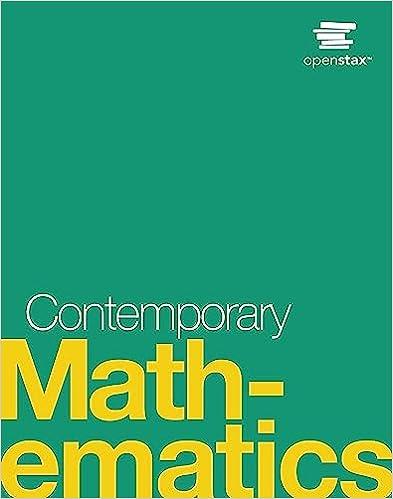For each series of premises, draw a logical conclusion to the argument that includes one of the
Question:
For each series of premises, draw a logical conclusion to the argument that includes one of the following quantifiers: all, some, or none.
1. \(1+2=3,5+6=11\), and \(14+15=29\). Of these, 1 and 2 are consecutive integers, 5 and 6 are consecutive integers, and 14 and 15 are consecutive integers. Also, their sums, 3, 11, and 29 are all prime numbers. Prime numbers are positive integers greater than one that are only divisible by one and the number itself. What conclusion can you draw from these premises?
2. A robin is a bird that lays blue eggs. A chicken is a bird that typically lays white and brown eggs. An ostrich is a bird that lays exceptionally large eggs. If a bird lays eggs, then they do not give live birth to their young. What conclusion can you draw from these premises?
3. All parallelograms have four sides. All rectangles are parallelograms. All squares are rectangles. What additional conclusion can you make about squares from these premises?
Step by Step Answer:





